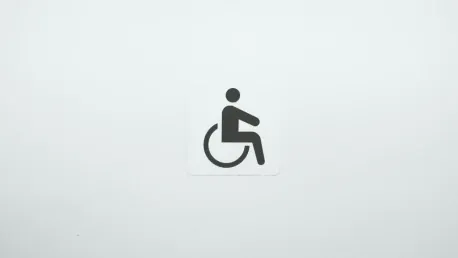Section 504 of the Rehabilitation Act of 1973 plays a pivotal role in promoting equality in education by preventing discrimination based on disabilities. This federal law mandates that educational institutions receiving federal funding ensure equal access to their programs, activities, and facilities for individuals with disabilities. It’s essential for these institutions, spanning K-12 schools to higher education, to understand and implement the accommodations required under Section 504 to foster an inclusive and nonsegregated educational environment. The legal framework, practical applications, and operational implications of Section 504 provide a comprehensive view of its importance in the educational sector.
Legal Framework and Scope
Section 504 applies broadly, encompassing not only public schools but also private colleges and universities engaged in federal student aid programs. This law ensures that individuals with disabilities have ample access to educational opportunities provided in the least restrictive environment possible. Compliance is crucial for fostering inclusivity and preventing any form of discrimination within educational settings. At its core, the legal framework demands that schools offer a wide array of accommodations to address diverse needs. These range from academic supports tailored to assist with coursework modifications, physical and mental health aids, and structural program modifications meant to level the playing field for students with disabilities.
The law’s mandate for providing “meaningful access” reflects a commitment to ensuring that students with disabilities receive opportunities equal to those of their non-disabled peers. Such a comprehensive legal framework is designed to create an educational landscape where inclusivity is the norm. For educational institutions, adhering to these guidelines isn’t just a legal requirement but a moral obligation to support all students in achieving their academic potential. By embracing these tenets, schools can promote a culture of equality and accessibility critical for the holistic development of students with disabilities.
Accommodations in K-12 Education
In the context of K-12 education, Section 504 accommodations are instrumental in supporting students with diverse needs. These accommodations may cover a wide spectrum, including preferential seating arrangements in classrooms, extended time for test-taking, and specific supports for managing medical conditions. Schools and districts work collaboratively with parents to perform evaluations and determine the necessary modifications tailored to each student’s unique circumstances. One of the key aspects of Section 504 is its provision that prohibits the delay or denial of evaluations when a disability is known or suspected. This ensures timely intervention and continuous support, fostering an environment conducive to learning for all students.
Additionally, although Section 504 does not specifically mandate the creation of written plans, schools are encouraged to document all accommodations through written Section 504 plans. This practice helps clearly define the supports in place and reduces potential misunderstandings between school administrators, teachers, parents, and students. Documenting these plans promotes transparency and consistency in the implementation of accommodations, thereby providing a structured approach to supporting students with disabilities within K-12 educational settings. It underscores the essential role of clear communication and well-defined support structures in ensuring that all students have equitable access to educational opportunities.
Accommodations in Higher Education
In higher education, the dynamic shifts as responsibility for advocating accommodations moves to students. This is a significant transition from the K-12 setting, highlighting the importance of developing robust self-advocacy skills before commencing college. Students must contact their college’s disability office to request the necessary adjustments, fostering independence and personal responsibility. Colleges, in turn, must balance providing accommodations with the need to maintain academic standards and avoid significant financial or administrative hardships. Accommodations can vary widely, from extensions on assignments to ensuring accessible on-campus housing, allowing students with disabilities to thrive in a challenging academic environment.
The scope of Section 504 extends beyond academics, ensuring inclusivity in extracurricular activities, athletics, and various school operations. This means that higher education institutions must ensure physical accessibility in all facilities and guarantee that all programs and activities are inclusive, regardless of location. These comprehensive requirements underscore the commitment to promoting equal opportunities and inclusivity for students with disabilities in all aspects of college life. By addressing physical and programmatic accessibility, higher education institutions can create a supportive and inclusive environment that empowers all students to succeed.
Evaluation and Eligibility Process
Determining eligibility for Section 504 accommodations involves a meticulous evaluation process to assess whether a student’s physical or mental impairments significantly hinder their major life activities. For K-12 students, this typically involves collaboration between schools or districts and parents. Such evaluations must be timely and thorough, ensuring that students receive the necessary support without undue delays. Schools are mandated to act swiftly whenever a disability is known or suspected, providing the requisite interventions to support students’ educational journey. This proactive approach ensures that students receive adequate support, enabling them to participate fully in their education.
In higher education, the process becomes more student-driven, requiring students to disclose their disabilities and actively request accommodations. This shift emphasizes the need for students to hone their self-advocacy skills, enabling them to navigate the complexities of higher education successfully. Self-advocacy involves understanding one’s own needs, knowing what accommodations are available, and effectively communicating these needs to the respective disability services offices. By learning to advocate for themselves, students can ensure they receive the support necessary to excel academically and personally. This transition to self-advocacy reflects a critical developmental milestone for students as they move from secondary to higher education.
Operational Implications
The operational implications of Section 504 extend far beyond simple academic accommodations, requiring educational institutions to address both academic and non-academic needs comprehensively. Ensuring facilities are physically accessible and inclusive is paramount. This includes modifications to buildings, classrooms, and other spaces to meet the needs of students with disabilities. Complementary to Section 504, the Americans with Disabilities Act of 1990 further emphasizes the necessity for non-discriminatory practices and reinforces the obligations of educational institutions to create inclusive environments. Together, these laws provide a robust framework for promoting accessibility and inclusivity across all educational operations.
Despite the crucial importance of Section 504, the absence of direct federal grants for compliance presents a significant challenge. Schools and higher education institutions must strategically allocate resources to fulfill these legal obligations effectively. This often involves budgeting for necessary modifications and accommodations, training staff to understand and implement these requirements, and continually assessing and updating policies to ensure compliance. The commitment to supporting students with disabilities must be a priority, involving collaboration among administrators, educators, and support staff to create an inclusive educational environment. Adapting operations to meet Section 504 requirements ensures that all students, regardless of their disabilities, have the chance to succeed.
Statistical Insights and Trends
Section 504 of the Rehabilitation Act of 1973 plays a crucial role in promoting equality in education by ensuring that disability-based discrimination is prohibited. This federal law requires educational institutions that receive federal funding to provide equal access to their programs, activities, and facilities for individuals with disabilities. It’s vital for these institutions, which include K-12 schools and higher education establishments, to recognize and implement necessary accommodations as mandated by Section 504. This law helps create an inclusive and nonsegregated educational environment. Understanding the legal framework, practical applications, and operational impacts of Section 504 is essential to grasp its significance in the educational sector. By adhering to these guidelines, schools and colleges can better support their students with disabilities, ensuring they receive the same educational opportunities as their peers. The comprehensive approach of Section 504 highlights its indispensable role in fostering inclusive education.








